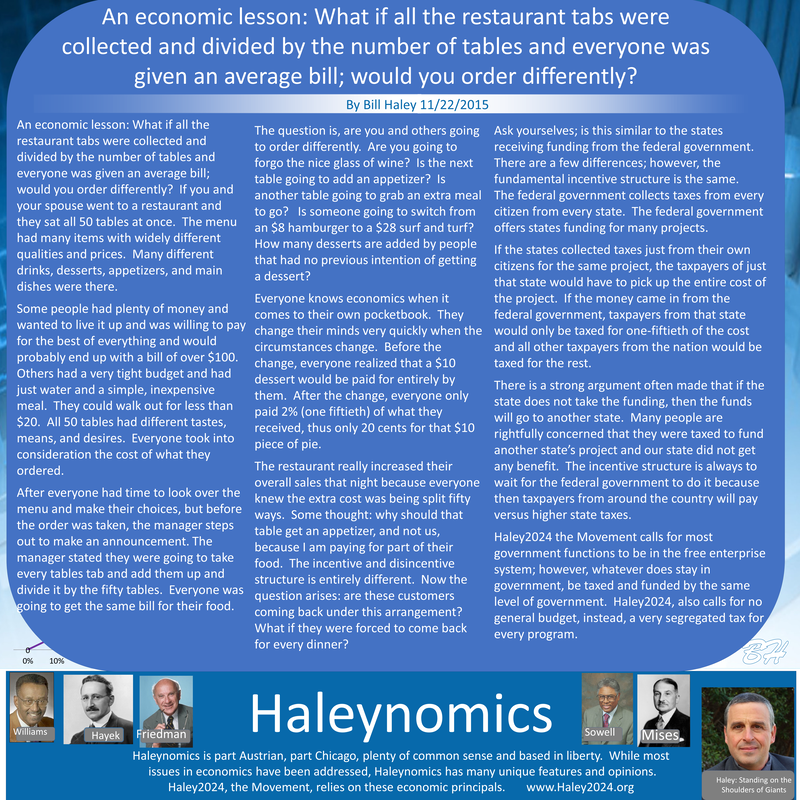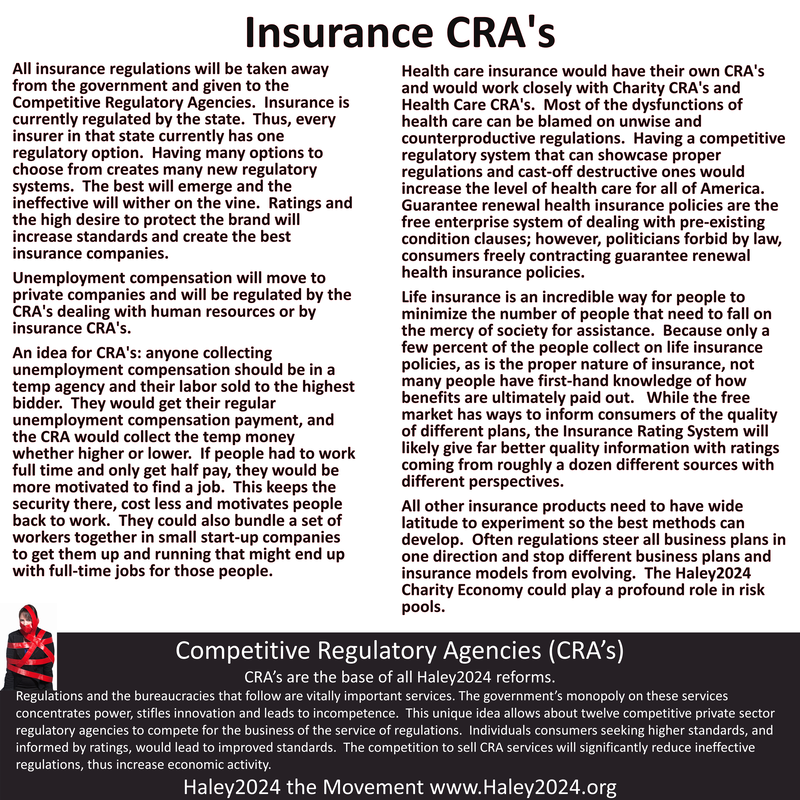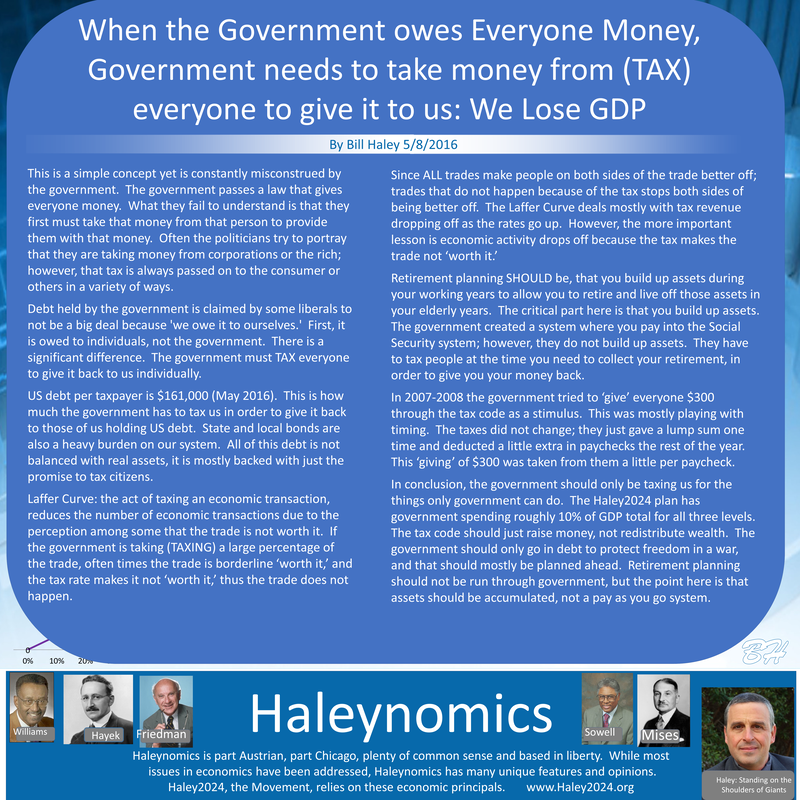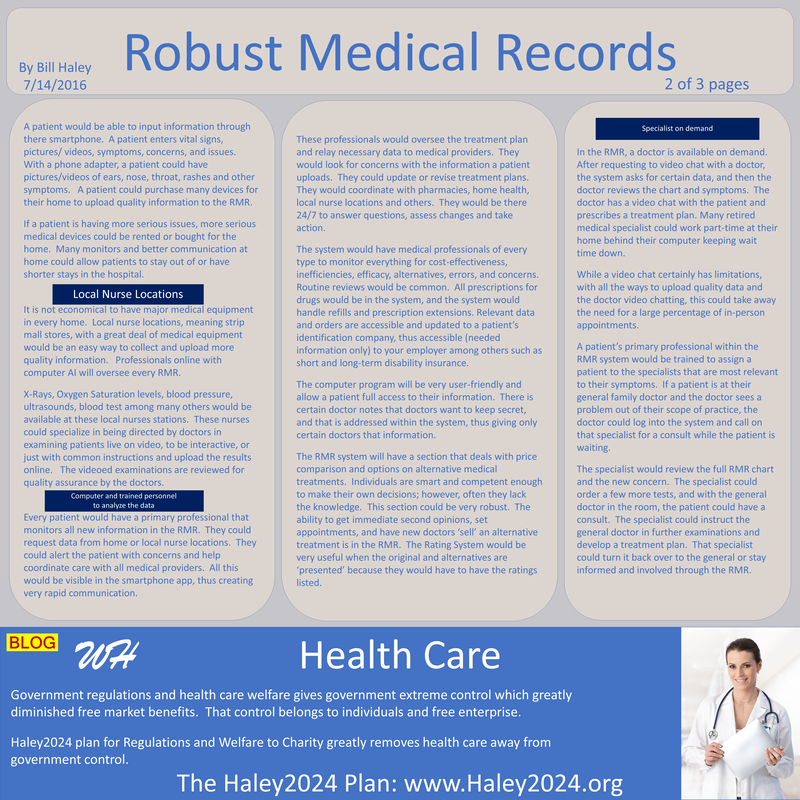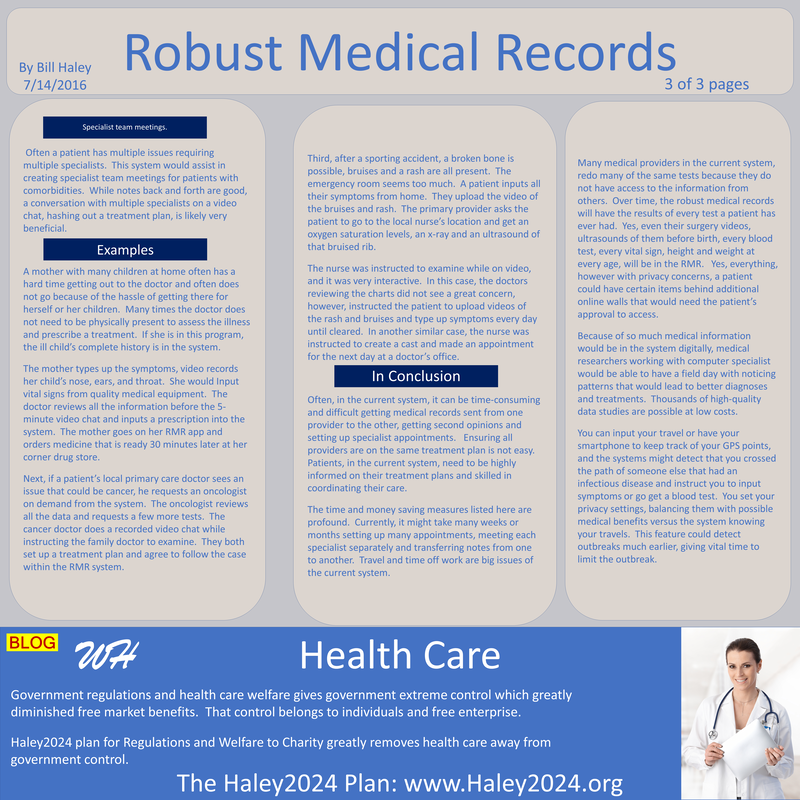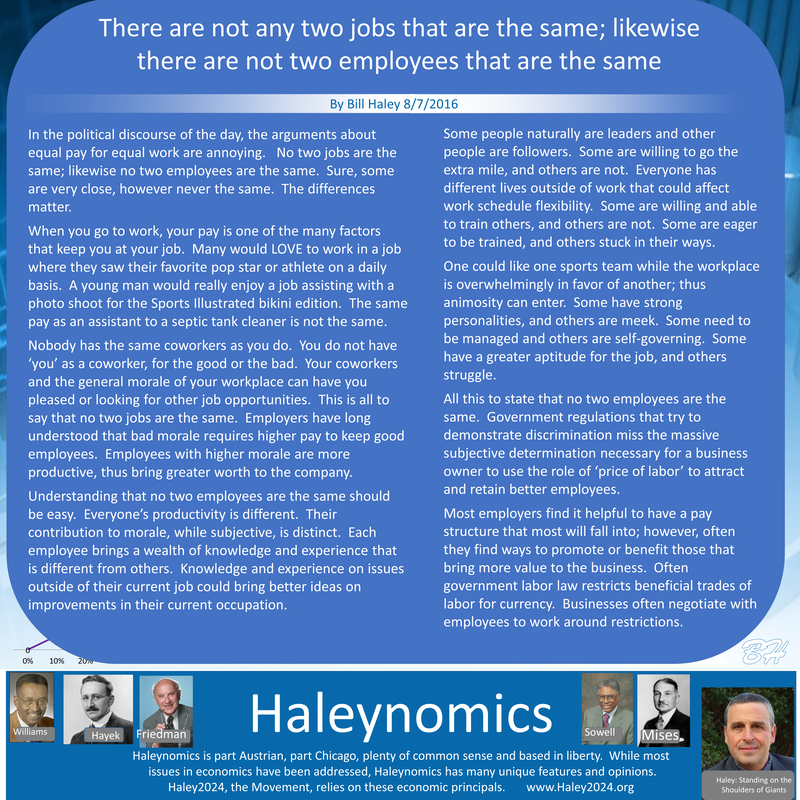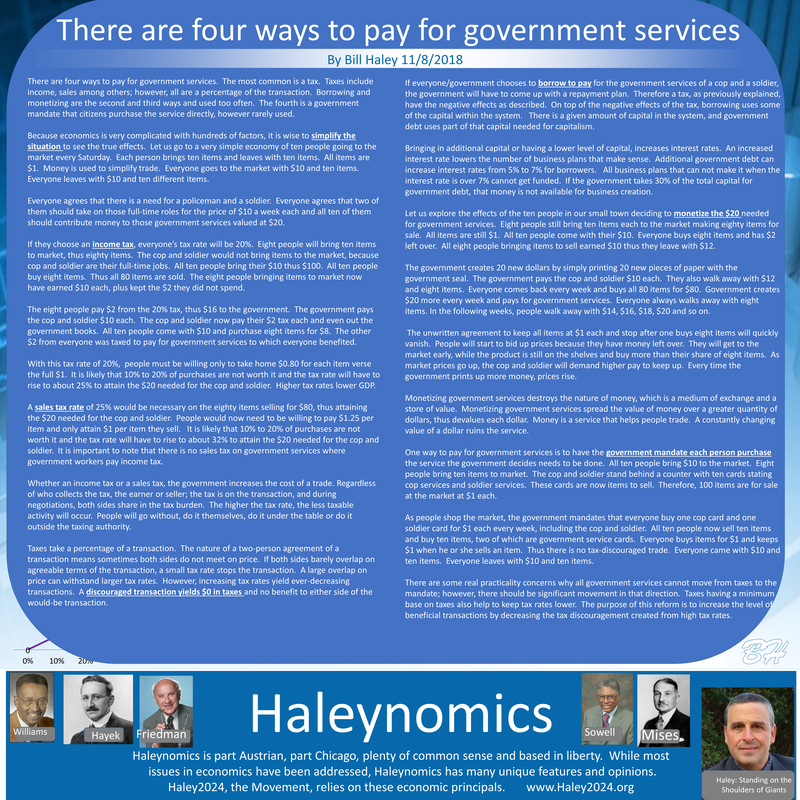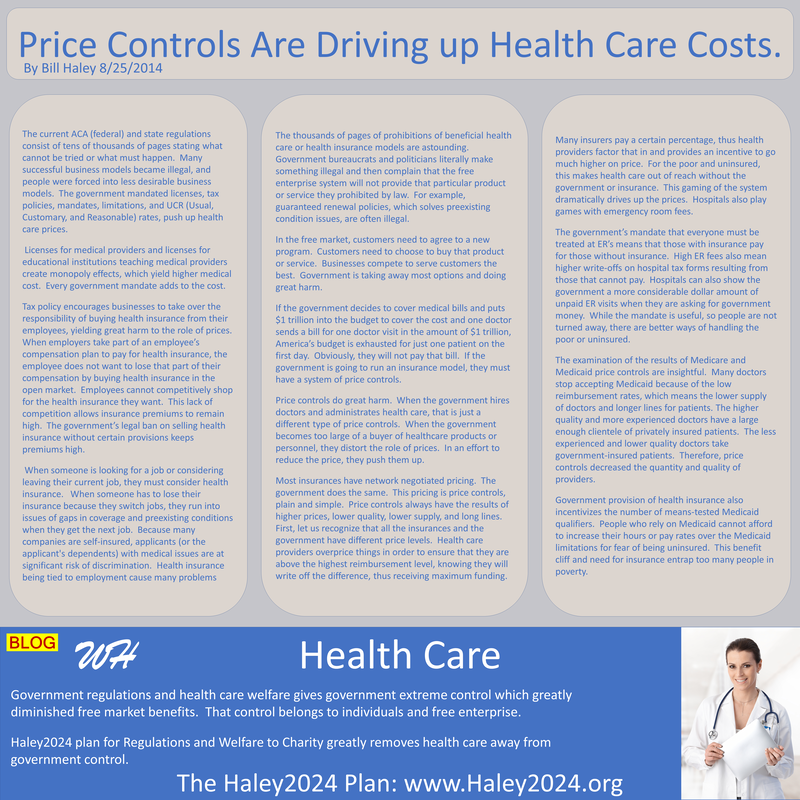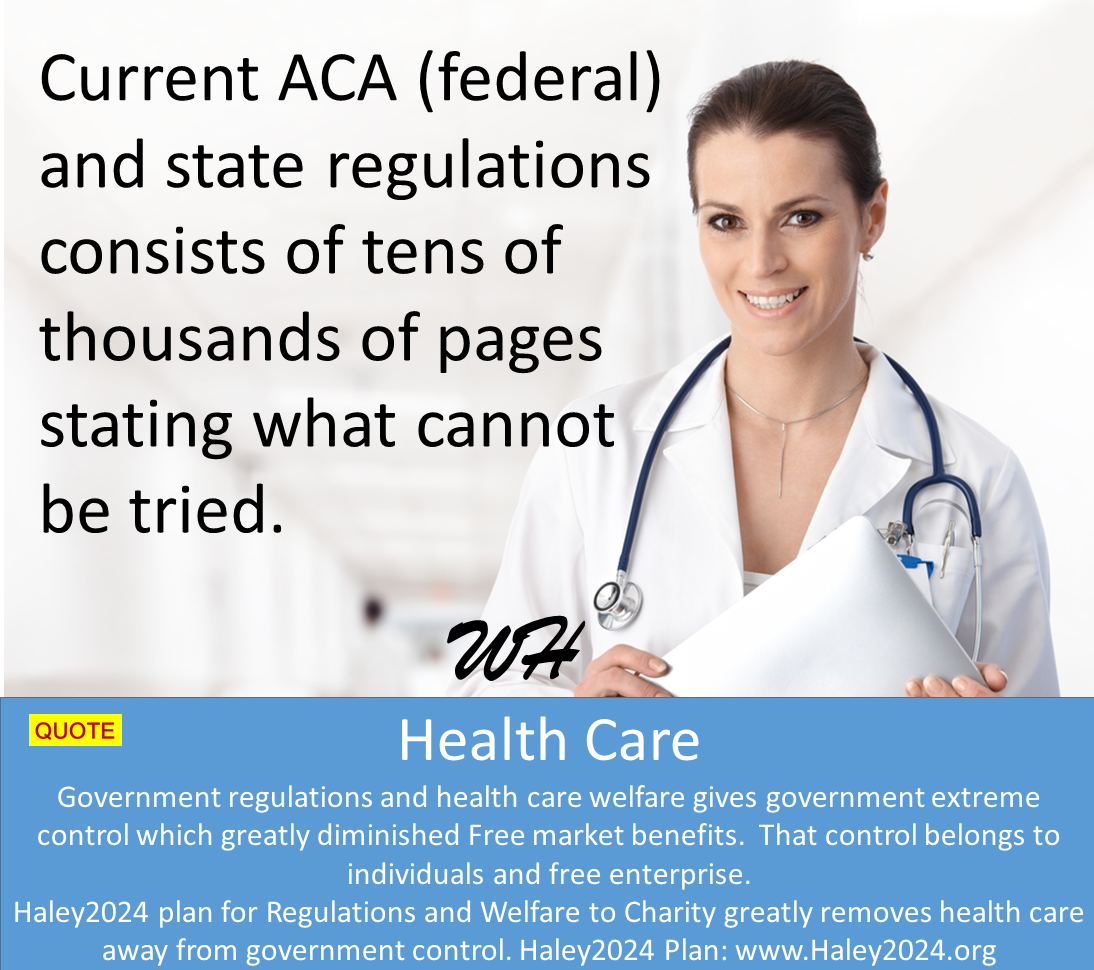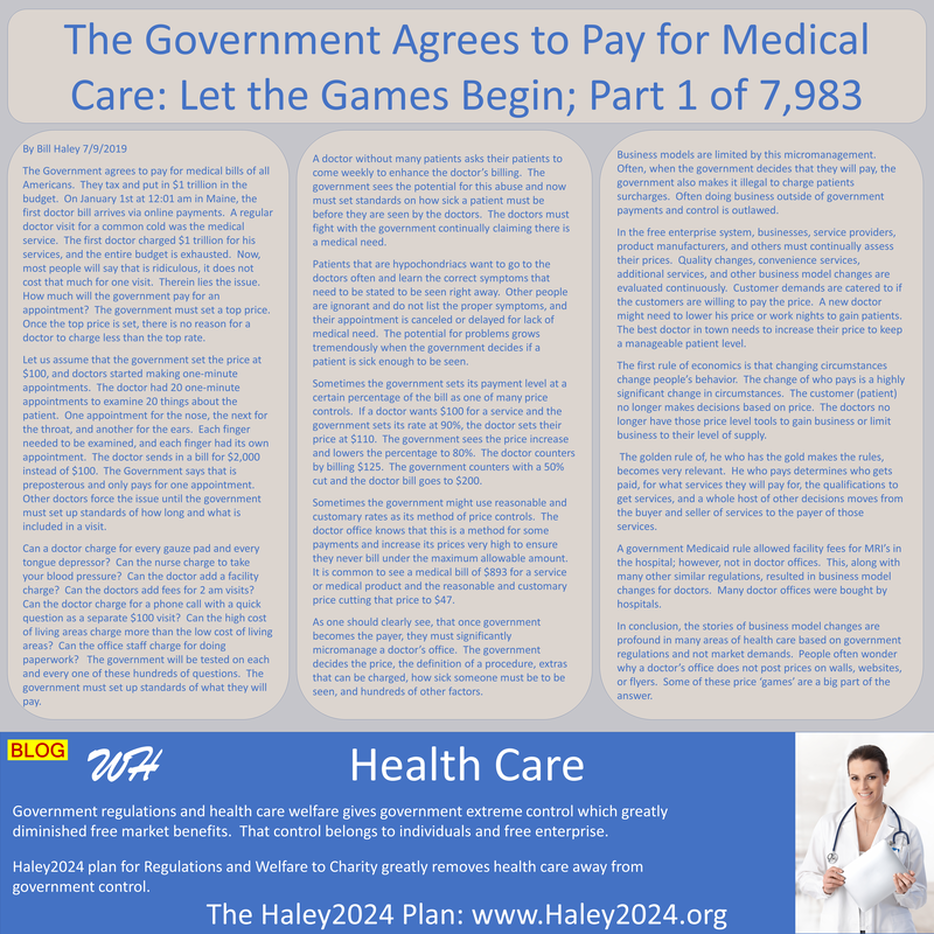| The Government agrees to pay for medical bills of all Americans. They tax and put in $1 trillion in the budget. On January 1st at 12:01 am in Maine, the first doctor bill arrives via online payments. A regular doctor visit for a common cold was the medical service. The first doctor charged $1 trillion for his services, and the entire budget is exhausted. Now, most people will say that is ridiculous, it does not cost that much for one visit. Therein lies the issue. How much will the government pay for an appointment? The government must set a top price. Once the top price is set, there is no reason for a doctor to charge less than the top rate. |
| Let us assume that the government set the price at $100, and doctors started making one-minute appointments. The doctor had 20 one-minute appointments to examine 20 things about the patient. One appointment for the nose, the next for the throat, and another for the ears. Each finger needed to be examined, and each finger had its own appointment. The doctor sends in a bill for $2,000 instead of $100. The Government says that is preposterous and only pays for one appointment. Other doctors force the issue until the government must set up standards of how long and what is included in a visit. |
| Can a doctor charge for every gauze pad and every tongue depressor? Can the nurse charge to take your blood pressure? Can the doctor add a facility charge? Can the doctors add fees for 2 am visits? Can the doctor charge for a phone call with a quick question as a separate $100 visit? Can the high cost of living areas charge more than the low cost of living areas? Can the office staff charge for doing paperwork? The government will be tested on each and every one of these hundreds of questions. The government must set up standards of what they will pay. |
| A doctor without many patients asks their patients to come weekly to enhance the doctor’s billing. The government sees the potential for this abuse and now must set standards on how sick a patient must be before they are seen by the doctors. The doctors must fight with the government continually claiming there is a medical need. |
| Patients that are hypochondriacs want to go to the doctors often and learn the correct symptoms that need to be stated to be seen right away. Other people are ignorant and do not list the proper symptoms, and their appointment is canceled or delayed for lack of medical need. The potential for problems grows tremendously when the government decides if a patient is sick enough to be seen. |
| Sometimes the government sets its payment level at a certain percentage of the bill as one of many price controls. If a doctor wants $100 for a service and the government sets its rate at 90%, the doctor sets their price at $110. The government sees the price increase and lowers the percentage to 80%. The doctor counters by billing $125. The government counters with a 50% cut and the doctor bill goes to $200. |
| Sometimes the government might use reasonable and customary rates as its method of price controls. The doctor office knows that this is a method for some payments and increase its prices very high to ensure they never bill under the maximum allowable amount. It is common to see a medical bill of $893 for a service or medical product and the reasonable and customary price cutting that price to $47. |
| In the free enterprise system, businesses, service providers, product manufacturers, and others must continually assess their prices. Quality changes, convenience services, additional services, and other business model changes are evaluated continuously. Customer demands are catered to if the customers are willing to pay the price. A new doctor might need to lower his price or work nights to gain patients. The best doctor in town needs to increase their price to keep a manageable patient level. |
| The first rule of economics is that changing circumstances change people’s behavior. The change of who pays is a highly significant change in circumstances. The customer (patient) no longer makes decisions based on price. The doctors no longer have those price level tools to gain business or limit business to their level of supply. |
| The golden rule of, he who has the gold makes the rules, becomes very relevant. He who pays determines who gets paid, for what services they will pay for, the qualifications to get services, and a whole host of other decisions moves from the buyer and seller of services to the payer of those services. |
| In conclusion, the stories of business model changes are profound in many areas of health care based on government regulations and not market demands. People often wonder why a doctor’s office does not post prices on walls, websites, or flyers. Some of these price ‘games’ are a big part of the answer. |

